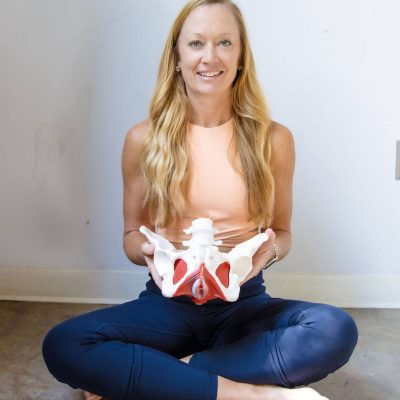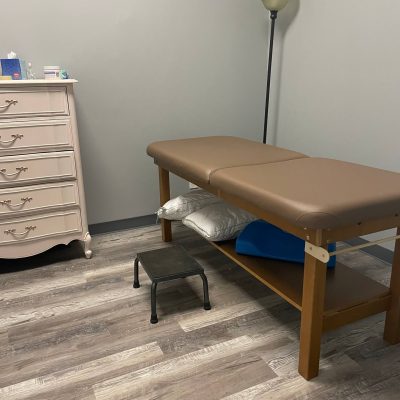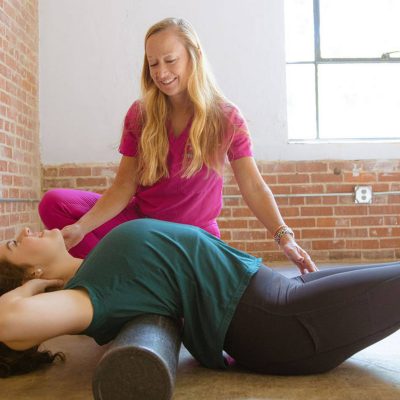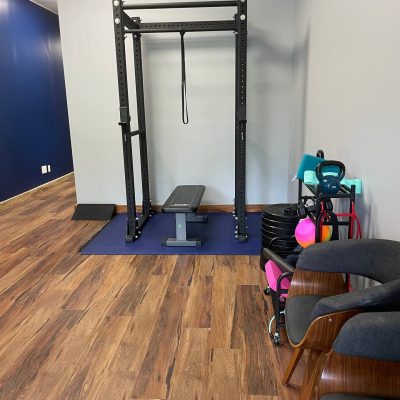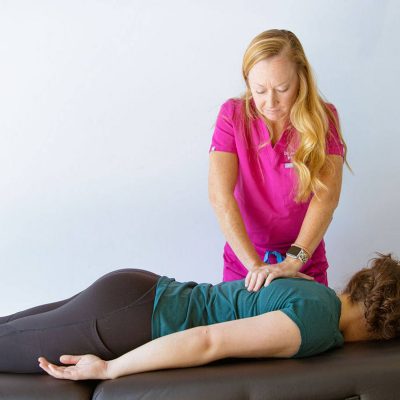The structural and hormonal changes that happen during pregnancy don’t just disappear as soon as your baby is delivered, and overdoing it after pregnancy can result in urine or bowel leakage, pelvic discomfort, joint pain and even injury. You may have had a vaginal delivery and you might be recovering from stitches; or you might have delivered via cesarean birth, which involves an incision through the abdomen which cuts through many layers of tissue and muscle. Seeing a pelvic floor physical therapist prior to returning to activity can help address your symptoms and provide guidance on returning to exercise safely while your body is still in recovery. All women heal differently following childbirth, so seeing a Pelvic Floor PT for an assessment of your current state of healing and function can give you great insight on your road to recovery.
The six-week mark is typically when you’ll have your postpartum checkup with your healthcare provider. Any questions about your body, how it’s healing or how you are feeling should be addressed at that visit. The postpartum checkup is also critical for identifying any post-birth conditions like diastasis recti (abdominal muscle separation, a condition that affects 60% of people six weeks after birth and 30% at one year after birth) or incontinence (which can affect one-third of first-time moms and be an indicator of pelvic prolapse), both of which can be treated by a pelvic floor physical therapist conservatively.
Early postpartum 0-3 week exercises will include: Deep breathing with gentle abdominal wall tightening, ankle pumps and foot/ankle circles while you are sitting or lying down, and walking.
3-8 weeks postnatal: it is recommended you wait until your six-week postnatal check before starting a group exercise program or going back to the gym. Exercises can progressively include: walking, pelvic floor and core exercises (but not just kegels!), and progressive body weight exercises.
8-12 weeks postnatal exercises will include: Gym program (maintain posture, light weights, no breath holding), pelvic floor exercises. Visit a pelvic floor physical therapist for a postnatal abdominal muscle check and pelvic floor muscle
testing before returning to high-impact exercise, running, sport or abdominal exercise programs.
As you start exercising, start small and progress slowly. Monitor for any abnormal symptoms. Some “red flags,” to look out for: bleeding during/after exercise, pelvic/vaginal heaviness or pressure, incontinence (either urinary or bowel), low back pain, pelvic pain, doming or gap in the abdominal wall. These red flags mean you would greatly benefit from a Pelvic Floor PT consultation!
Sit ups, curl ups, planks, hovers and mountain climbers are not recommended exercises for postnatal moms, as they can place pressure on the lower abdominal wall and the recovering pelvic floor. A pelvic floor and postnatal abdominal check is recommended before undertaking these intense core exercises.
Are you a postpartum mom wondering where and how to begin exercise following childbirth? Contact us!

